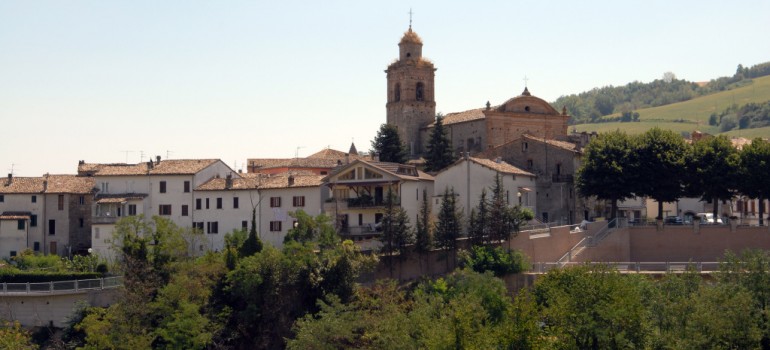
The origin of Rotella is possibly pre-Roman. It owes its name to its strategic location on a bend of the river Tesino, at the foot of Mount Ascensione. Rotella was erected as a castle of defense in the 10th century, by the Benedictine monks of Farfa , since 1204 it belonged to the religious center of Santa Vittoria in Matenano. In 1318 Rotella subjected itself to Ascoli. In 1586 Rotella was united to Montalto delle Marche by Pope Sixtus V. In the village you can admire the square construction of Clock Tower (15th century) , and the Church of SS. Maria e Lorenzo in baroque style. Near the village is the Church of St. Viviana (late 18th century) and next to it the Piccolomini Museum of Sacred Art, which houses many valuable relics . Capradosso, Castel di Croce, Poggio Canoso, were erected in the 8th century as castles for the defense of Ascoli Piceno, at about 700 m. above sea level. Worth visiting are: the interesting Capradosso Verdiente Oratory of 11th century , The Sanctuary of Madonna della Consolazione or Montemisio, and the Church of Saint Lucia with a beautiful gothic shrine. In the village of Poggio Canoso you can find the Church of Saint Lucia with the copies of four paintings by Pietro Alemanno now preserved in the Diocesan Museum of Ascoli Piceno, the small rural Church of San Rocco, the Hermitage of St. Francesco ( now closed ), where, according to the tradition, St. Francesco of Assisi spent a night, the Natural History Museum dedicated to local flora and fauna. In the village of Castel di Croce is the Church of St. Severino. Mount Ascensione 1,108 m. above sea level, owes its name to the Church of the Ascensione founded there by Domenico Savi . The Mount has a jagged shape that suggests different figures: sleeping beauty or Dante’s profile and is full of beautiful tracks along which you can walk or ride a mountain bike.
Immagine in diretta aggiornata ogni 30 secondi.
La presente webcam non effettua alcuna registrazione video. Non ha funzioni di videosorveglianza e non conserva alcun dato personale. Ogni nuova fotografia sovrascrive quella precedente con refresh automatico, molto similmente ad una macchina fotografica che scatta le foto senza immagazzinarle in memoria. E’ possibile salvare le fotografie cliccando con il tasto destro del mouse sull’immagine e poi alla voce “Salva immagine con nome”. L’immagine è regolata per non recare disturbo alla privacy del vicinato dei passanti e ha l’unico scopo di diffondere in tempo reale le immagini provenienti territorio.